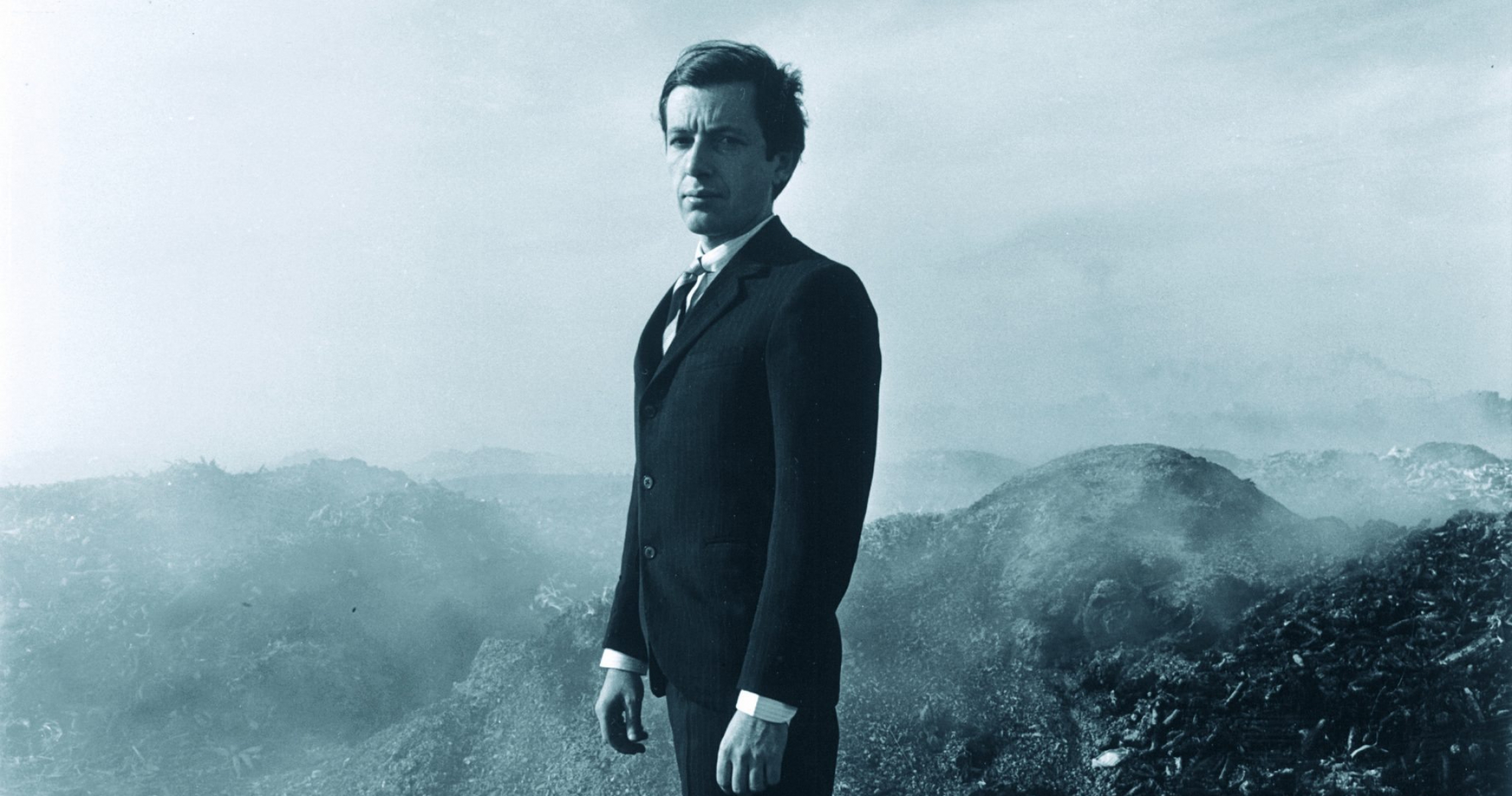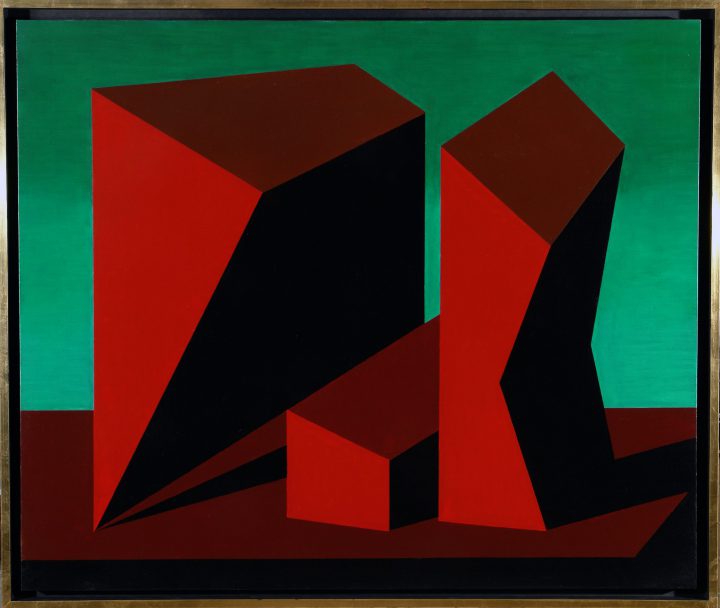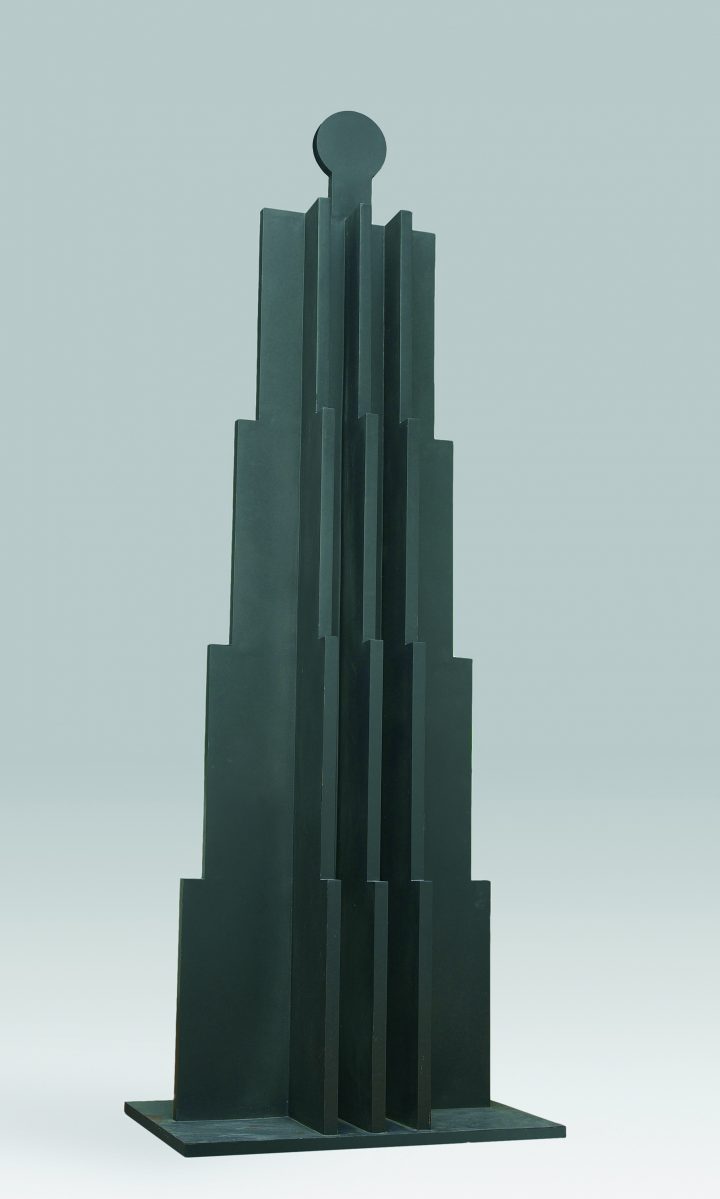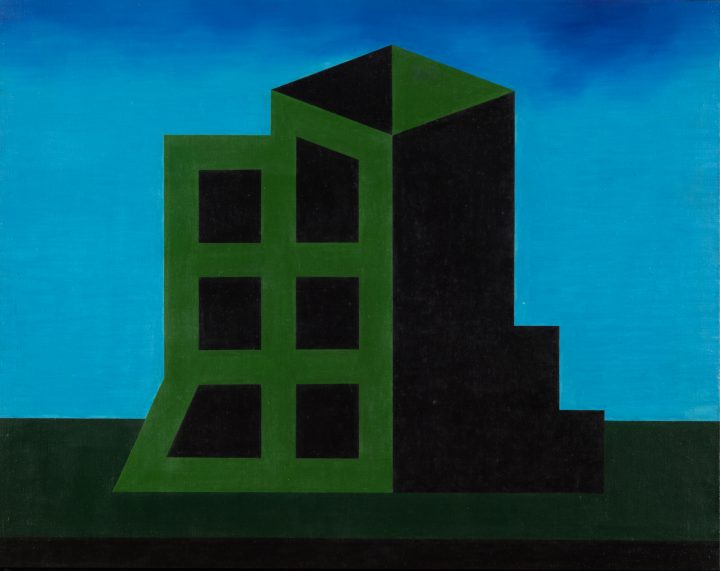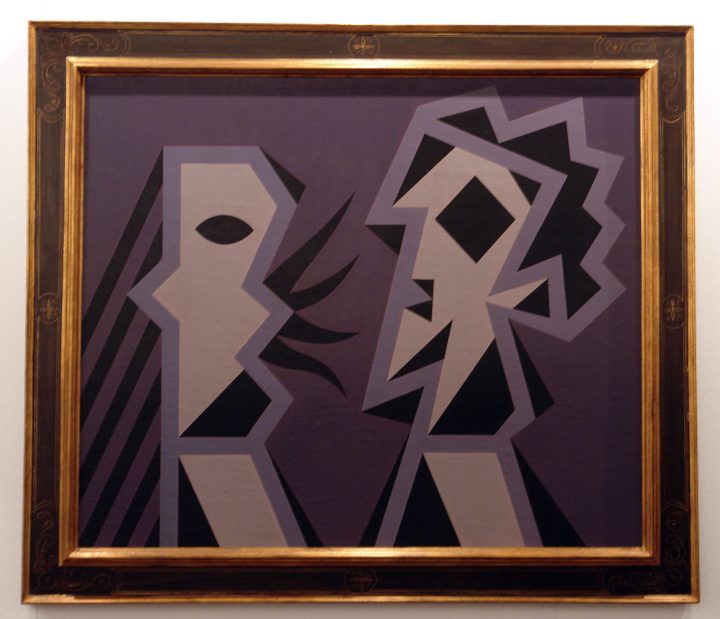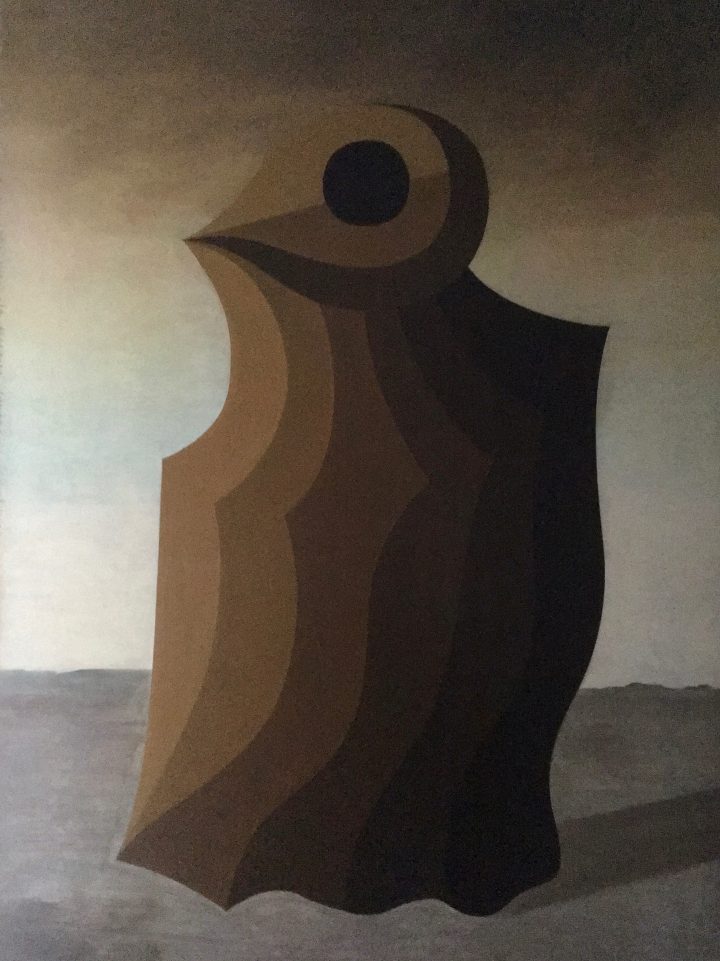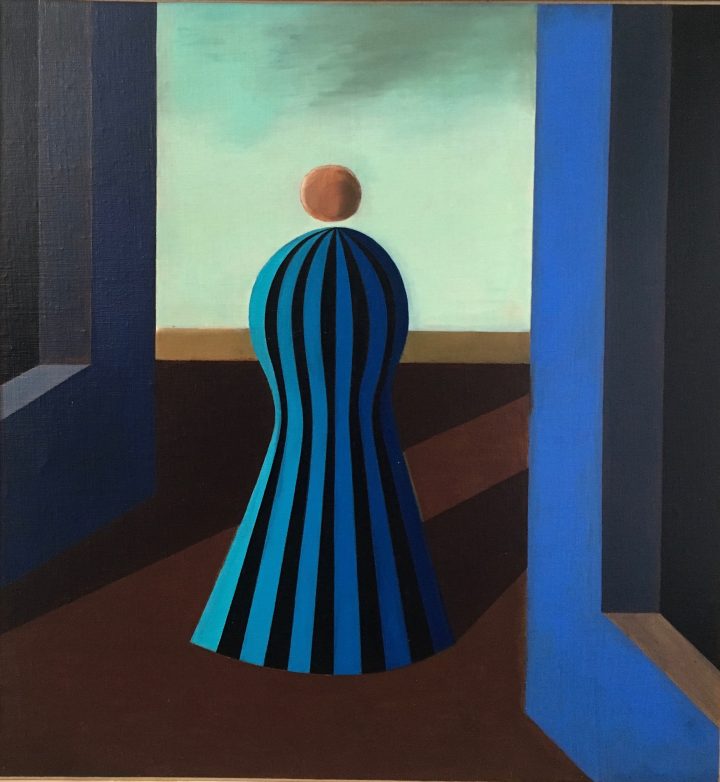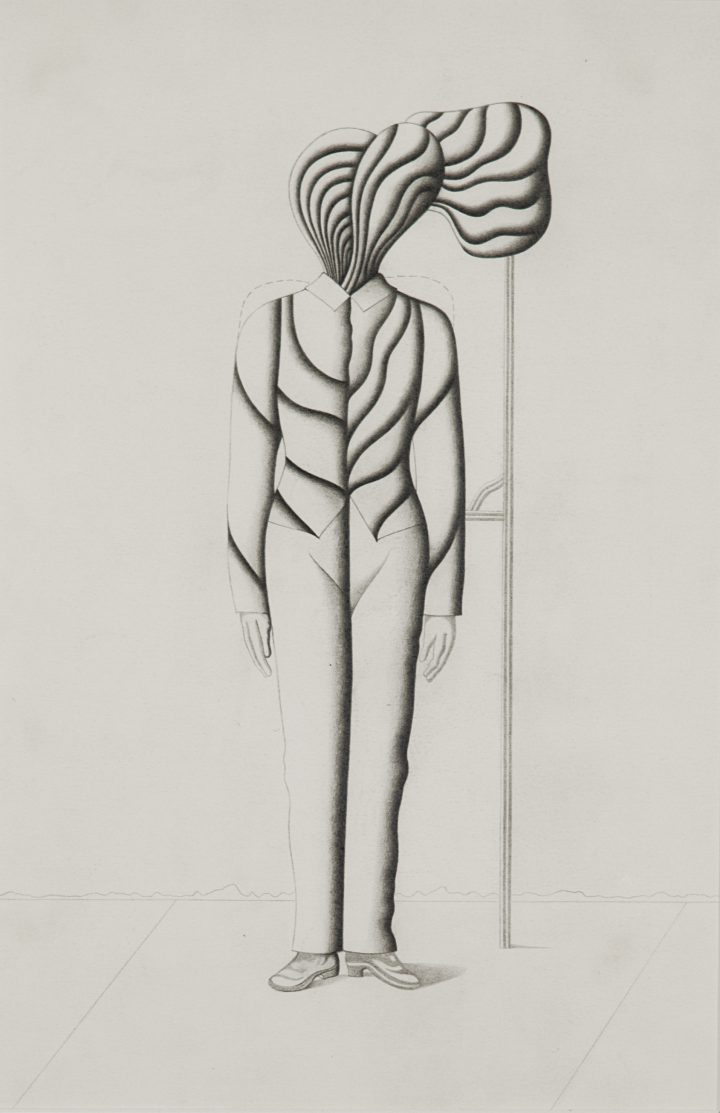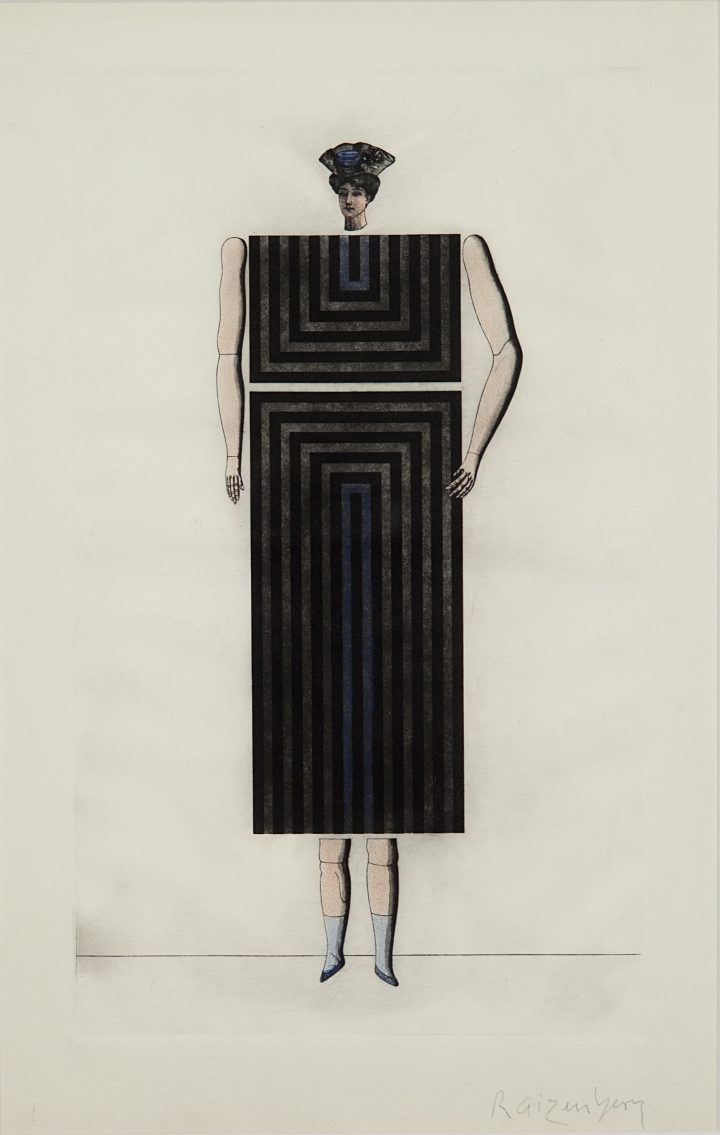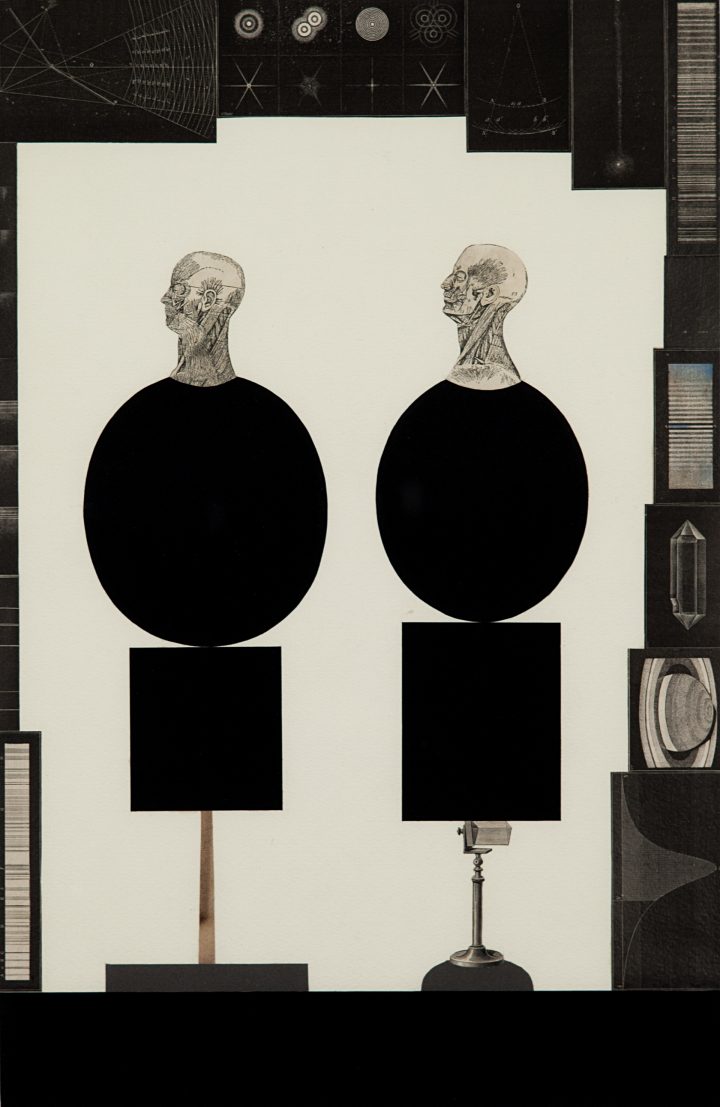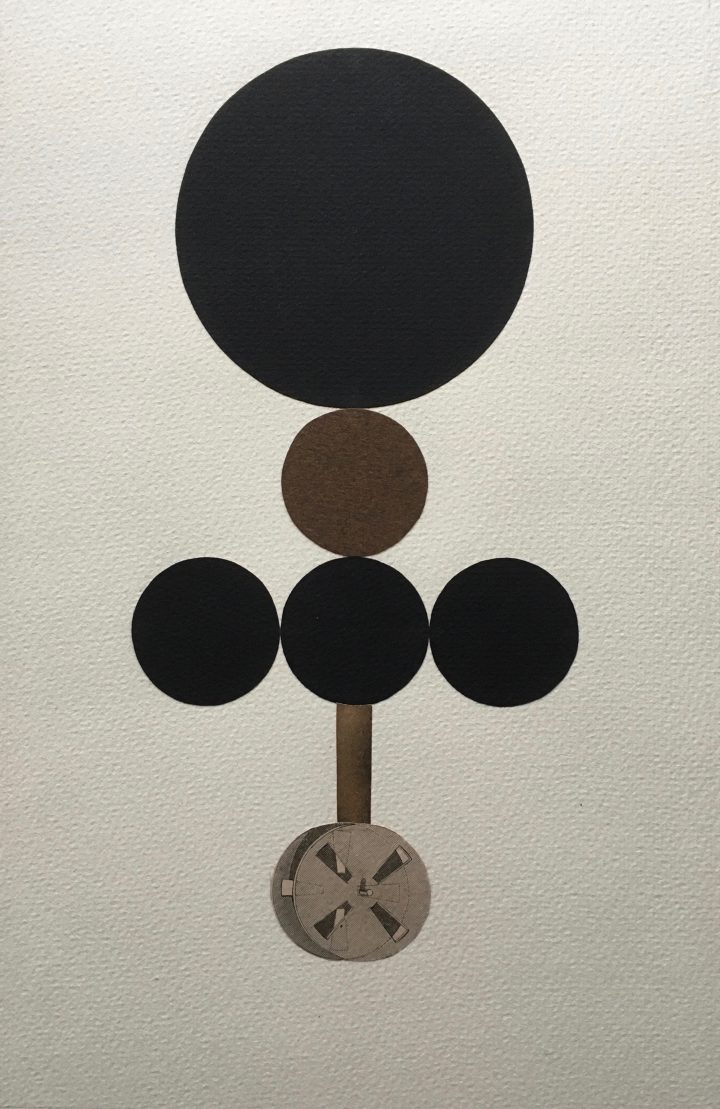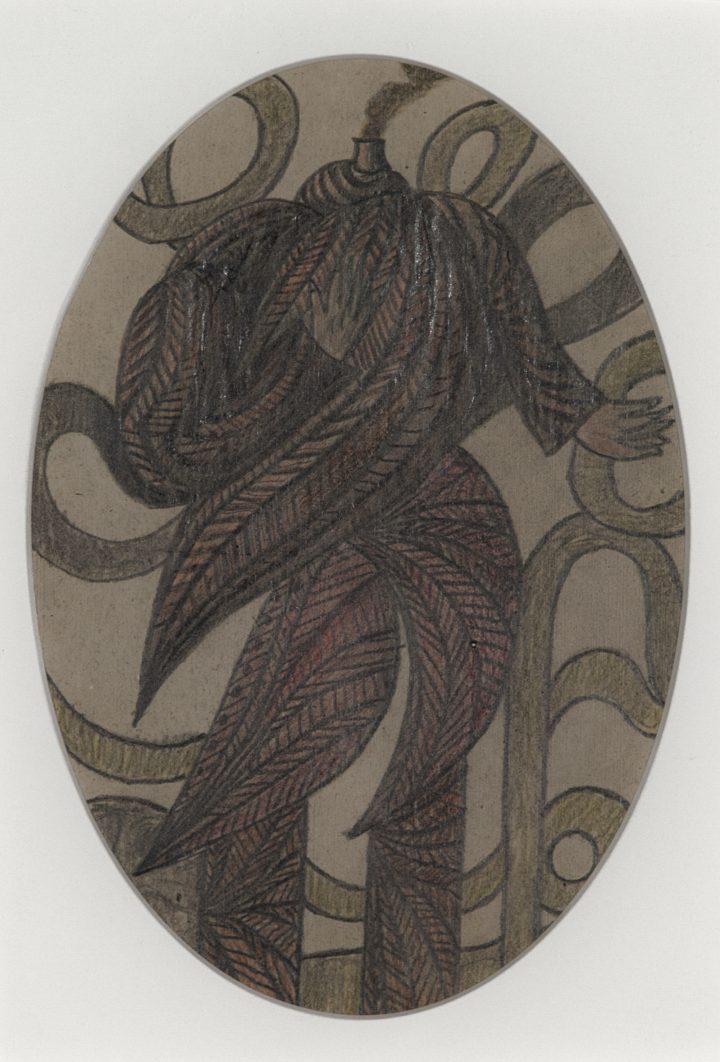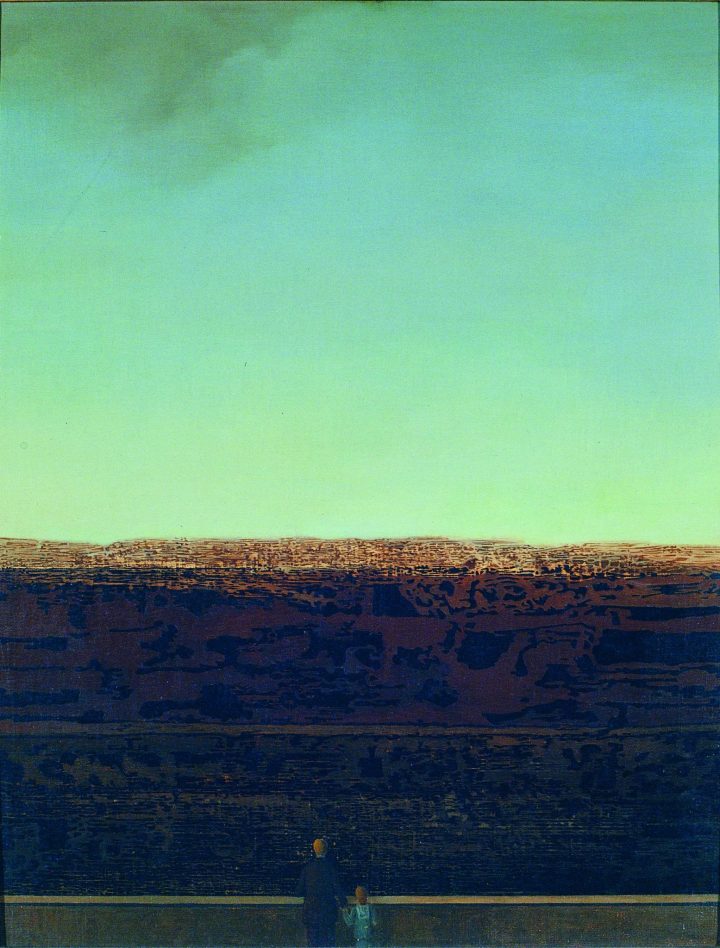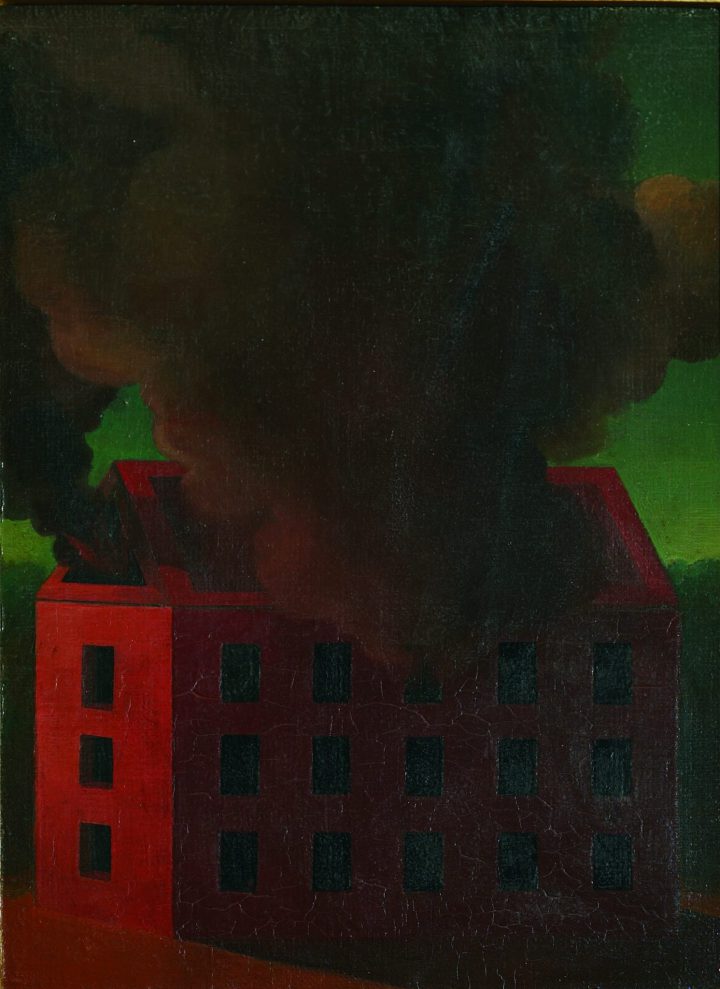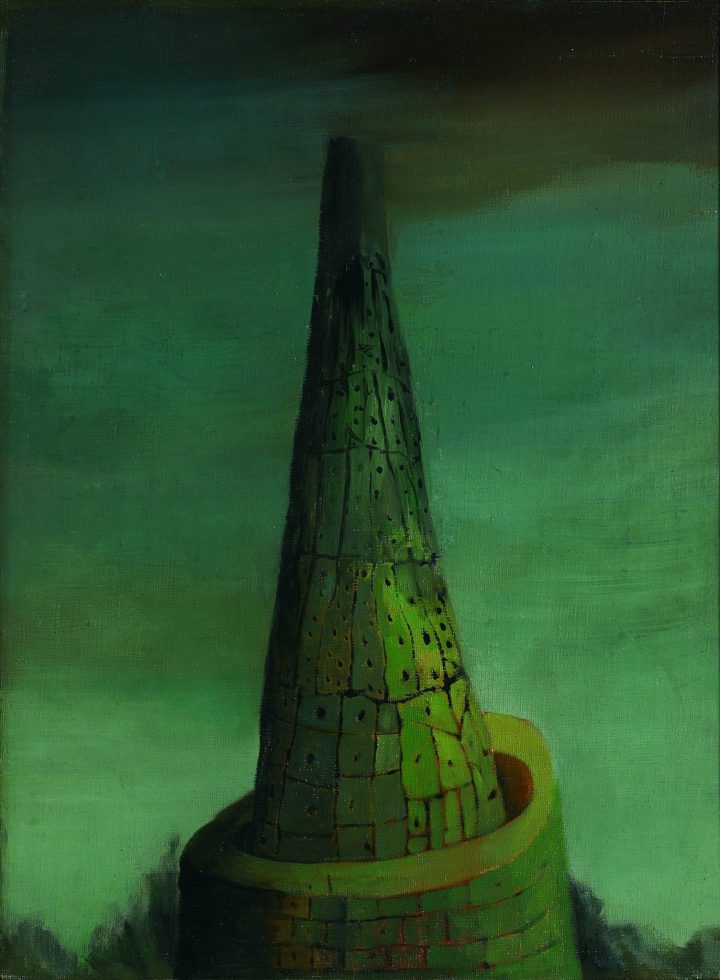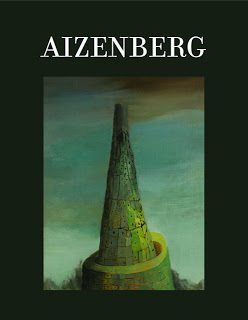Born in Federal, Entre Ríos, in 1928 and died in 1996, in the city of Buenos Aires, Argentina. He was a disciple of Antonio Berni and Juan Batlle Planas.
His most important exhibitions were at the Centro de Artes Visuales del Instituto Torcuato Di Tella, Buenos Aires (1969). Hanover Gallery, London and Switzerland (1972), Galeria del Naviglio, Milan (1982). CDS Gallery, New York (1992). National Museum, Stockholm (1989)
His works are in the Museum of Modern Art, New York, The Jack S. Blanton Museum of Art, Texas. National Museum of Fine Arts, Buenos Aires, among others.
Individual exhibitions
2014
Sin edad, sin tiempo, sin espacio, Ruth Benzacar Galería de Arte. Buenos Aires, Argentina
2013
Roberto Aizenberg, trascendencia / descendencia, Colección de Arte Amalia Lacroze de Fortabat. Buenos Aires, Argentina
2012
Aizenberg y amigos, Proa. Buenos Aires, Argentina
2003
Escultura, sin titulo, emplazada en el Parque de la Memoria de la Ciudad Autónoma de Buenos Aires (Costanera Norte), realizada por la Comisión Pro Monumento a las Víctimas del Terrorismo de Estado, el Gobierno de la Ciudad de Buenos Aires, la Universidad de Buenos Aires y la Legislatura Porteña, reinterpretando los planos de Aizenberg, donados por sus nietos. Argentina
Roberto Aizenberg, Galería Ruth Benzacar. Buenos Aires, Argentina
Art Basel Miami, Galería Ruth Benzacar. Miami, Estados Unidos
2001
El caso Roberto Aizenberg, Centro Cultural Recoleta. Buenos Aires, Argentina
1999
A Latin American Project: Roberto Aizenberg, Marcelo Bonevardi, Gonzalo Fonseca, Elsa Gramcko, CDS Gallery. Nueva York, Estados Unidos
Exposición Homenaje, Galería Van Eyck. Buenos Aires, Argentina
1995
Invitado de Honor Arte BA’95, Buenos Aires, Argentina
Roberto Aizenberg, Galería Klemm. Buenos Aires, Argentina
1992
Homenaje a Matilde, Galería Palatina. Buenos Aires, Argentina
Roberto Aizenberg: Drawings and Paintings, CDS Gallery. New York, Estados Unidos
1990
Oleos y Dibujos, Galería Jorge Mara. Buenos Aires, Argentina
1984
Dibujos, Galería Nueva Manufacta. Buenos Aires, Argentina
1982
Disegni di Roberto Aizenberg, Galería del Naviglio. Milán, Italia
1979
Oleos y dibujos, Galería Vermeer. Buenos Aires, Argentina
1975
Robeto Aizenberg, pinturas, esculturas y grabados, Art Gallery International. Buenos Aires, Argentina
1973
Pinturas y dibujos, Gimpel & Hanover Gallery. Zurich, Suiza
1972
Roberto Aizenberg. First European Exhibition of drawings, Hanover Gallery. Londres, Reino Unido
1971
Aizenberg. Una trayectoria (1950-1971), Galería Estudio Actual. Caracas, Venezuela
1970
Aizenberg, Oleos y dibujos, Galería Rubbers. Buenos Aires, Argentina
1969
Roberto Aizenberg: Obras 1947-1968, Centro de Artes Visuales del Instituto Torcuato Di Tella. Buenos Aires, Argentina
El Arte y el Misterio-lo mágico, lo desconocido, lo sobrenatural (dibujos), Galería Bonino. Buenos Aires, Argentina
1967
Collages, Galería Bonino. Buenos Aires, Argentina
XVIIIº concurso del premio Fondo Nacional de las Artes Dr. Augusto Palanza, Galería Witcom. Buenos Aires, Argentina
Autorretratos, Galería Rubbers. Buenos Aires, Argentina
1966
Dibujos, Galería Galatea. Buenos Aires, Argentina
1964
Artistas Independientes, Galería Van Riel. Buenos Aires, Argentina
Objetos, Museo de Arte Moderno de Buenos Aires. Buenos Aires, Argentina
1963
Joyas Modernas, Galería Rubbers. Buenos Aires, Argentina
1962
Collages, Galería Lirolay. Buenos Aires, Argentina
Oleos, Galería El Pórtico. Buenos Aires, Argentina
1961
Aizenberg, joyas, Galería Rubbers. Buenos Aires, Argentina
1958
Dibujos y collages, Galería Galatea. Buenos Aires, Argentina
1954
Pinturas y dibujos, Galería Wilensky. Buenos Aires, Argentina
Group exhibitions
2021-2022
Reunión, Ruth Benzacar Galería de Arte. Buenos Aires Argentina.
2014
El círculo caminaba tranquilo/La Colección Deutsche Bank con obras del Museo, Museo de Arte Moderno de Buenos Aires. Buenos Aires, Argentina
2005
ARCO ’05, Ruth Benzacar Galería de Arte. Madrid, España
2004
ARCO ’04, Ruth Benzacar Galería de Aarte. Madrid, España
From White to Black, CDS Gallery. Nueva York, Estados Unidos
Malba, Museo de Arte Latinoamericano de Buenos Aires, Colección Costantini. Buenos Aires, Argentina
2003
Correo Argentino lanza la emisión de sellos postales “Pintura Argentina”, Museo de Arte Latinoamericano de Buenos Aires. Buenos Aires, Argentina
Art Basel Miami, Ruth Benzacar Galería de Arte. Miami, Estados Unidos
2001
Del Río de la Plata, CDS Gallery. Nueva York, Estados Unidos
2000
Argentina: Bajo la Línea del Horizonte, Seminario FNA/Fundación Proa/Museo Guggenheim, Fondo Nacional de las Artes. Buenos Aires, Argentina
1999
A Latin American Project: Roberto Aizenberg, Marcelo Bonevardi, Gonzalo Fonseca, Elsa Gramcko, CDS Gallery. Nueva York, Estados Unidos
1998
The Age of Drawing: An International Scene, CDS Gallery. Nueva York, Estados Unidos
Cultura de lo surreal, Fundación Federico Jorge Klemm. Buenos Aires, Argentina
1995
The Second Generation, CDS Gallery. Nueva York, Estados Unidos
1994
ARCO ‘94, Galería Jorge Mara. Madrid, España
Donaciones Latinoamericanas, Museo de Bellas Artes. Caracas, Venezuela
Cien Obras Maestras Cien Pintores Argentinos 1810-1994, Museo Nacional de Bellas Artes, IIº Bienal Konex ’94. Buenos Aires, Argentina
20 x 20, (20 críticos convocan a 20 artistas); Fundación Banco Patricios. Buenos Aires, Argentina
1989
Arte en Iberoamérica 1820-1980, The Hayward Gallery, Londres; Moderna Museet, Estocolmo; Palacio de Velázquez, Madrid, España
1987
Art of The Fantastic: Latin América 1920-1987, Indeanapolis Museum of Art; itinerante:The Queens Museum, Nueva York, Estados Unidos. Center for the Fine Arts, Miami, Estados Unidos; Centro Cultural Arte Contemporáneo, México, 1988.
ARCO ‘87, Galería Veermer. Madrid, España
1985
Del pop-art a la nueva imagen, Galería Ruth Benzacar. Buenos Aires, Argentina
1984
Realismo: tres vertientes, Museo de América, Madrid, junio, Maison de L’Amérique Latine, Paris, Francia
1978
14 Artistes Argentins, Centre d’Art Plastique Contemporain, Art Curial. París, Francia
100 años de pintura y escultura en la Argentina 1878-1978, Banco de la Ciudad de Buenos Aires, Salas Nacionales de Exposición. Buenos Aires, Argentina
1976
Pintura Argentina Actual. Dos tendencias: Geometría-Surrealismo, Museo Nacional de Bellas Artes,. Buenos Aires, Argentina
1974
Grandes Creadores del Continente, Galería Estudio Actual. Caracas, Venezuela
1972
Arte Argentino Actual, Kunsthaus, Hamburgo, Alemania; Museo de Arte Villa Ciani, Lugano, Suiza
Arte de sistemas II, Museo de Arte Moderno de Buenos Aires; Centro de Arte y Comunicación (CAYC), Buenos Aires, Argentina
1971
Dibujos de Artistas Argentinos, Galería Carmen Waugh. Buenos Aires, Argentina
Arte Argentino Actual, Galería Kunsthalle, Basilea, Suiza; itinerante: Galería Christoph Durr, Munich, Alemania; Rheinisches Landesmuseum, Bonn, Alemania
Roberto Aizenberg, Jorge Kleiman y Noé Nojechowicz, Galería Benzac-Art. Buenos Aires, Argentina
1970
Arte argentino, Albright-Knox Art Gallery. Búfalo, Estados Unidos
24 Artistas Argentinos, Museo Nacional de Bellas Artes. Buenos Aires, Argentina
Pintura Argentina – Promoción Internacional, Fundación Lorenzutti, Museo Nacional de Bellas Artes. Buenos Aires, Argentina
1969
Panorama de la Pintura Argentina II, Fundación Lorenzutti, Salas Nacionales de Exposición. Buenos Aires, Argentina
Primera Muestra de Artes Plásticas, Galería Benzac-Art. Buenos Aires, Argentina
1968
Últimos Ingresos, Museo de Arte Moderno de Buenos Aires. Buenos Aires, Argentina
1967
Surrealismo en la Argentina, Centro de Artes Visuales del Instituto Torcuato Di Tella. Buenos Aires, Argentina
1965
Noé + Experiencias Colectivas, Museo de Arte Moderno de Buenos Aires. Buenos Aires, Argentina
1965
XXVº Salón de las Artes de La Plata, Museo de Arte Contemporáneo Latinoamericano. La Plata, Argentina
1964
Artistas Independientes, Galería Van Riel. Buenos Aires, Argentina
1963
VIIº Bienal de San Pablo, Brasil
1961
Arte Argentino contemporáneo, Museo de Arte Moderno de Río de Janeiro. Río de Janeiro, Brasil
1960
Primera Exposición Internacional de Arte Moderno, Museo de Arte Moderno de Buenos Aires. Buenos Aires, Argentina
Catorce Pintores de la Nueva Generación, Galería Lirolay. Buenos Aires, Argentina
Pintura Argentina Joven, Museo de Arte Moderno. DF, México
Ciento Cincuenta Años de Pintura Argentina, Museo Nacional de Bellas Artes,. Buenos Aires, Argentina
1957
Inés Blumencweig y Roberto Aizenberg, Galería Plástica. Buenos Aires, Argentina
Awards
1992
Premio Siemens de la Crítica, XIIº Jornadas de la Crítica, Museo Nacional de Bellas Artes. Buenos Aires, Argentina
1985
Premio Dr. Augusto Palanza, Fondo Nacional de las Artes. Buenos Aires, Argentina
1968
Premio Pisano, Asociación Argentina de Críticos de Arte, Galería Witcomb. Buenos Aires, Argentina
1966
Premio Leonor Vassena, Galería Van Riel. Buenos Aires, Argentina
1965
Premio María Calderón de la Barca, Museo Nacional de Bellas Artes. Buenos Aires, Argentina
1964
Selección Vº del Premio Nacional Di Tella, Instituto Torcuato Di Tella. Buenos Aires, Argentina
1963
Selección IVº del Premio Nacional Di Tella, Instituto Torcuato Di Tella. Buenos Aires, Argentina
1961
Segunda edición del Premio Ver y Estimar, Museo Nacional de Bellas Artes. Buenos Aires, Argentina
Premio Werthein de Pintura Argentina, Galería Van Riel. Buenos Aires, Argentina
1960
Premio Ver y Estimar, Galería Van Riel. Buenos Aires, Argentina
Collections
Museo Nacional de Bellas Artes. Buenos Aires, Argentina
Museo de Arte Moderno de la Ciudad de Buenos Aires. Buenos Aires, Argentina
Museo de Arte Latinoamericano de Buenos Aires, Colección Costantini. Buenos Aires, Argentina
Fondo Nacional de las Artes. Buenos Aires, Argentina
Museo Fortabat. Buenos Aires, Argentina
Museo Provincial de Bellas Artes. La Plata, Argentina
Museo de Arte Contemporáneo de Rosario. Santa Fe, Argentina
Museum of Modern Art. Nueva York, Estados Unidos
Albright-Knox Art Gallery, Búfalo, Estados Unidos.
The Jack S. Blanton Museum of Art, The University of Texas, Austin, Texas, Estados Unidos.
Bronx Museum of the Arts. Nueva York, Estados Unidos
The Rhode Island School of Desing, Art Museum. Providence, Rhode Island, Estados Unidos
The First National Bank of Boston. Boston, Massachusetts, Estados Unidos
Museo de Bellas Artes de Caracas. Caracas, Venezuela
Museo de Arte Latinoamericano Contemporáneo de Managua. Managua, Nicaragua.


